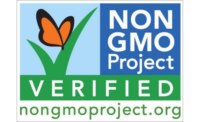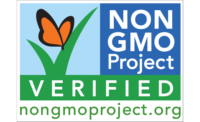![]()
Candy and the Law
by Andrea Allen
From the candy tax to regulation of vending machines
in schools, U.S. lawmakers are addressing a myriad of issues relating to diet
and health.
If it seems that the
obesity epidemic is hogging the media spotlight from the Baby
Boomers’ quest for eternal youth, there’s good reason. Obesity
is emerging as one of the most serious public health threats of the decade.
The problem is obvious. The solution is less obvious. From the
federal government to the states to the local school districts, everyone’s trying
to figure out how to stop the spread of obesity — especially among children
and adolescents, before it’s too late.
Accordingly, obesity has been front-and-center in Congress and
in state legislatures for the past few years. This legislative session, the
Grocery Manufacturers of America is tracking 141 state bills that address the
issue. In 2001, they tracked only 43.
The states shift focus
Alarming as that increase might seem to the food
industry, especially to candy and snack-food marketers, the fact that those
numbers include “positive” as well as “negative”
bills should provide some perspective. While some states continue to focus
on the “negative” — such as vending and other sales
restrictions — the trend in this year’s state legislative
sessions has been more “positive” — such as bills that
either limit or prohibit civil liability actions against food companies.
Another recent trend has been toward bills that take a holistic approach to
solving the obesity problem, such as researching the causes of obesity as
well as supporting physical activity, nutrition education and other
long-term solutions.
Even so, it’s not as if vending restrictions
have been abandoned. According to Kristin Power, director of state affairs
for Grocery Manufacturers of America, many states and school districts are
considering policies that are more restrictive than the current U.S.
Department of Agriculture policy, which prohibits the sale of foods of
“minimal nutritional value” during the daily lunch and
breakfast periods for any school district participating in the School Lunch
and School Breakfast programs. That policy applies to more than 97,000 U.S.
schools in just about every school district.
As candy and snack-food marketers know, the
“minimal value” foods fall into four categories: soda
waters/soft drinks; water ices that don’t contain fruit or fruit
juice; chewing gum; and candies made predominantly from sweeteners, such as
hard candies, licorice, and candy-coated popcorn.
With the state of California leading the way, many
other state legislatures are considering tougher restrictions. In 2001,
California extended the soft-drink ban in elementary schools to the entire
school day, along with any food product in which 35 percent of the total
calories come from fat, 10 percent of the total calories come from
saturated fat, and 35 percent of the total weight comes from sugar. Those
restrictions were extended to California middle schools in 2003, and this
year, the legislature is considering extending them to high schools.
Some 62 similar pieces of legislation are now under consideration
across the country. That’s a bitter pill to swallow for the food industry, which,
along with many nutrition professionals, has long advocated moderation and portion
control instead of outright product bans. One industry strategy is to ensure
that school officials and legislators realize that federal restrictions are
already in place, and that vending machines can be turned off during certain
hours — rather than banning certain products, notes Steve Lodge, vice president
of legislative affairs for the National Confectioners Association.
But the worm may be turning. According to Scott Riehl, vice president of government affairs for
the National Food Processors Association, 42 of the 44 states currently in
session are attempting to address childhood obesity in some manner, and 10
have formed coalitions to study the causes and solutions. “Most
states are attempting to look at this issue in a comprehensive
manner,” Riehl says — an approach that’s endorsed by
industry as well as consumer groups.
Equally encouraging is the progress of civil
liability, or “personal responsibility,” legislation. More than
half the states are considering bills that would protect food companies
from obesity-related civil actions, while protecting legitimate causes for
action such as product adulteration or the presence of allergens.
These bills would afford some much-needed relief to
the candy and snack industries, which have been pummeled by vending
legislation for the past couple of years. But the long-term significance is
the level of support that these bills have achieved.
“This legislation has passed in committees and chambers across
the country with extreme bi-partisan support,” Riehl says. “Support has been
almost unanimous in most all the states where it has been debated.”
The national outlook
Even more encouraging is the fact that these types of
bills seem to be enjoying bi-partisan support at the federal level, despite the partisan atmosphere that pervades
Congress these days. The late 90s and the first part of this decade saw
some bitter debate over labeling regulations: industry-opposed initiatives
that ultimately passed, such as the requirements to disclose trans fats and
sugars on the Nutrition Facts panel; industry-supported measures that
passed as well, such as easing the regulations governing health claims.
But last fall, the so-called IMPACT legislation
introduced by Majority Leader Bill Frist (R-Tenn.) was passed by an
enthusiastic Senate; the version that’s now pending in the House has
co-sponsors from both sides of the aisle. IMPACT, or the Improved Nutrition
and Physical Activity Act, takes the industry-supported holistic approach
by providing grants for health professionals, school districts and other
organizations to research the causes of obesity, and to develop nutrition
education and physical activity programs to combat the epidemic.
This spring, the House passed its version of civil
liability legislation, the Personal Responsibility in Food Consumption Act,
which was introduced by Rep. Ric Keller (R-Fla.). Sen. Mitch McConnell
(R-Ky.) has introduced similar legislation in the Senate; it’s
expected to take a back seat to more contentious legislation in other
arenas, but to pass eventually.
If the bill makes it out of conference this session,
it’s a sure bet that President Bush would sign it. Considering the
bi-partisan support that similar legislation is garnering in state
legislatures, it’s reasonable to expect that a Democrat president
would sign the bill as well.
Will that remove the threat of frivolous lawsuits once
and for all? Clearly, the fast-food industry, which has been busy
increasing the number of healthful items on the menu while downsizing
portions at the same time, is not counting on it.
Sources say that food manufacturers also would be wise not to
take anything for granted. After all, even though polls show that almost 90
percent of Americans don’t support lawsuits against fast-food restaurants, the
lawsuits keep coming.
Plaintiff’s attorneys looking to target the food industry are
expected to focus on issues like deceptive marketing, especially where children
are involved. Despite recent measures that have eased restrictions on health
claims, for example, experts say that food manufacturers would be well advised
to make sure all packaging and advertising information follows the letter of
the law.
Andrea Allen is a writer and communications consultant
in Dallas, specializing in regulatory and nutrition issues.
Key Food Industry Legislative, Regulatory Issues Summarized
Allergen Labeling
In 2001, the food industry issued its own voluntary guidelines for labeling of potential allergens in foods. This spring, the Senate passed the Food Allergen Labeling and Consumer Protection Act, which largely reflects the policies the industry has already been following. The legislation does not add anything to the currently accepted list of major food allergens, which include milk, eggs, fish, crustacean shellfish, tree nuts, wheat, peanuts and soybeans. It does require that those ingredients be listed by their common or usual names.
Corresponding legislation is pending in the House.
Bioterrorism
Congress passed the Public Health Security and Bioterrorism Preparedness and Response Act, commonly called the Bioterrorism Act, in 2002. In October 2003, the U.S. Food and Drug Administration and the U.S. Bureau of Customs and Border Protection published an interim rule requiring, among other things, prior notice of each shipment of a food or ingredient, as well as prior registration of all facilities to which the food will be shipped.
Food companies and their industry associations requested a number of clarifications and expressed some concerns, such as ensuring that each agency’s timelines for notification be harmonized.
The "phase-in period" scheduled to end this August, and a final rule should be published shortly.
Candy Tax
Fifteen states currently have a candy tax, but Steve Lodge of the National Confectioners Association says he hasn’t seen too many proposals this year in the other states. Instead, the focus now seems to be on "streamlining" sales tax policies. States are anxious to tax internet and remote sales, but Congress has urged them to streamline their sales taxes before it will allow them to proceed. Budget officials from the states that tax in-store candy and soda sales successfully argued for definitions of those products, so that they would not lose those revenues. Their success sets the definitive language for states that tax candy and soda products; NCA is monitoring the action to try to ensure that other states do not follow suit.
Child Nutrition Programs
The House has reauthorized the Child Nutrition Improvement and Integrity Act, which governs the School Lunch Program, with no substantive changes except a requirement that participating school districts establish "wellness policies." That’s good news for the food industry. The Senate’s bill is pending, and industry sources are working to ensure that the measure is not used to create new food restrictions in schools.
Dietary Guidelines
With revised Dietary Guidelines due out in early 2005, the U.S. Food and Drug Administration and the U.S. Department of Agriculture will be working through the next few months on recommendations from the 2005 Advisory Committee, whose final meeting was in May. As always, industry groups are pushing for a science-based approach and urging the agencies to focus on consistent, easily understood messages.
In comments submitted to the Advisory Committee last January, the National Food Processors Association also noted that "expanding the physical activity component in balance with positive ‘how to eat’ messages and guidance, versus negative ‘what to eat’ is essential for success in motivating the American public toward healthy lifestyles."
In 2001, the food industry issued its own voluntary guidelines for labeling of potential allergens in foods. This spring, the Senate passed the Food Allergen Labeling and Consumer Protection Act, which largely reflects the policies the industry has already been following. The legislation does not add anything to the currently accepted list of major food allergens, which include milk, eggs, fish, crustacean shellfish, tree nuts, wheat, peanuts and soybeans. It does require that those ingredients be listed by their common or usual names.
Corresponding legislation is pending in the House.
Bioterrorism
Congress passed the Public Health Security and Bioterrorism Preparedness and Response Act, commonly called the Bioterrorism Act, in 2002. In October 2003, the U.S. Food and Drug Administration and the U.S. Bureau of Customs and Border Protection published an interim rule requiring, among other things, prior notice of each shipment of a food or ingredient, as well as prior registration of all facilities to which the food will be shipped.
Food companies and their industry associations requested a number of clarifications and expressed some concerns, such as ensuring that each agency’s timelines for notification be harmonized.
The "phase-in period" scheduled to end this August, and a final rule should be published shortly.
Candy Tax
Fifteen states currently have a candy tax, but Steve Lodge of the National Confectioners Association says he hasn’t seen too many proposals this year in the other states. Instead, the focus now seems to be on "streamlining" sales tax policies. States are anxious to tax internet and remote sales, but Congress has urged them to streamline their sales taxes before it will allow them to proceed. Budget officials from the states that tax in-store candy and soda sales successfully argued for definitions of those products, so that they would not lose those revenues. Their success sets the definitive language for states that tax candy and soda products; NCA is monitoring the action to try to ensure that other states do not follow suit.
Child Nutrition Programs
The House has reauthorized the Child Nutrition Improvement and Integrity Act, which governs the School Lunch Program, with no substantive changes except a requirement that participating school districts establish "wellness policies." That’s good news for the food industry. The Senate’s bill is pending, and industry sources are working to ensure that the measure is not used to create new food restrictions in schools.
Dietary Guidelines
With revised Dietary Guidelines due out in early 2005, the U.S. Food and Drug Administration and the U.S. Department of Agriculture will be working through the next few months on recommendations from the 2005 Advisory Committee, whose final meeting was in May. As always, industry groups are pushing for a science-based approach and urging the agencies to focus on consistent, easily understood messages.
In comments submitted to the Advisory Committee last January, the National Food Processors Association also noted that "expanding the physical activity component in balance with positive ‘how to eat’ messages and guidance, versus negative ‘what to eat’ is essential for success in motivating the American public toward healthy lifestyles."



